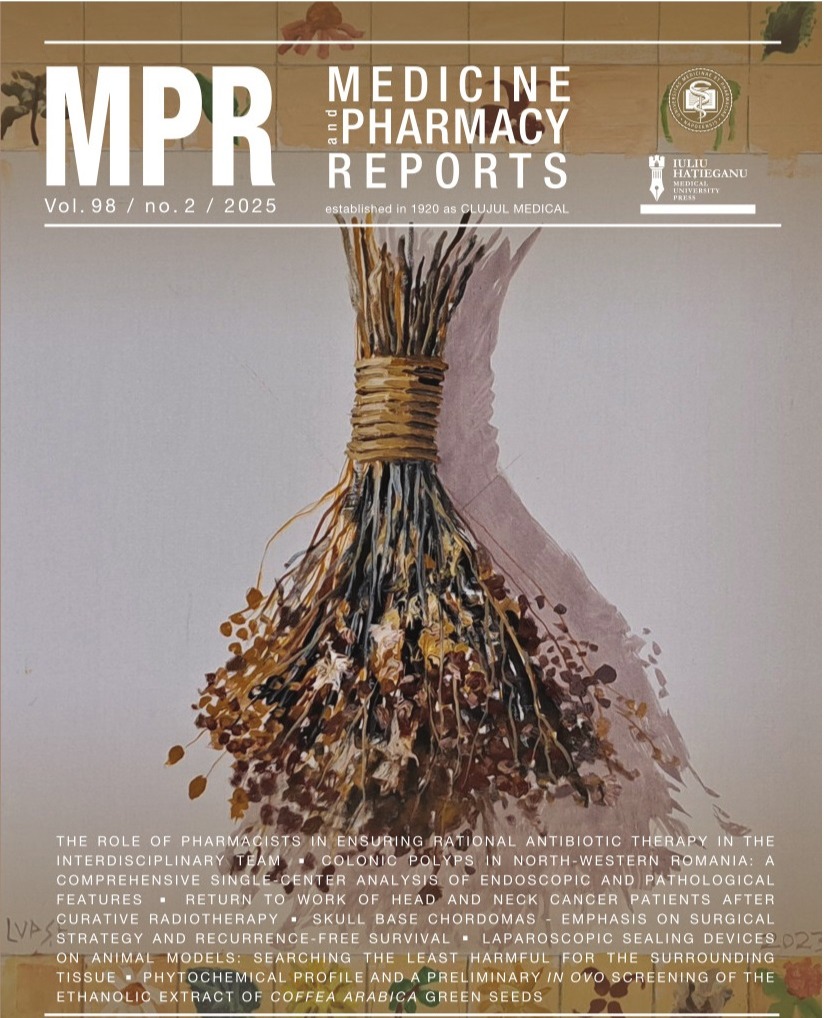Laparoscopic sealing devices on animal models: searching the least harmful for the surrounding tissue
DOI:
https://doi.org/10.15386/mpr-2768Keywords:
sealing devices, animal model, thermography, tissue damage, laparoscopic devicesAbstract
Background and aims. Sealing devices can produce mechanical and thermal damage to collateral tissue, with few studies analyzing these effects. However, the least harmful device for the surrounding tissue will achieve optimal functional results.
Methods. We compared the tissue damage made by different laparoscopic electro-cauterization instruments while using them as hemostatic means on the stomach and epiploon of Wistar rats, respectively on the diaphragm and urinary bladder of a porcine model. Five devices were used based on either radio frequency diathermy or ultrasound energy, with one coagulation cycle for the automatic hemostasis. Infrared thermography tracked thermal injury on the collateral tissue made by each device on the porcine model.
Results. We analyzed the collateral tissue with irreversible thermal damage caused by each sealing device with infrared thermography with ANOVA statistical test. Based on histopathological examination, we calculated the mean value of the area with edema and coagulation necrosis caused by these maneuvers of hemostasis as a pattern of tissue damage around the sealing mark of every hemostatic device.
Conclusions. Compared with bipolar sealing devices, ultrasound-based devices offered better collateral tissue preservation, with the smallest damaging temperature spread, on animal models. Further research on ultrasound vs. bipolar sealing devices used as hemostatic tools could more accurately assess their impact on functional outcomes in real life surgery setting.
Downloads
Published
How to Cite
Issue
Section
License
The authors are required to transfer the copyright of the published paper to the journal. This is done by agreeing to sign the Copyright Assignment Form. Whenever the case, authors are also required to send permissions to reproduce material (such as illustrations) from the copyright holder.

The papers published in the journal are licensed under a Creative Commons Attribution-NonCommercial-NoDerivatives 4.0 International License.

